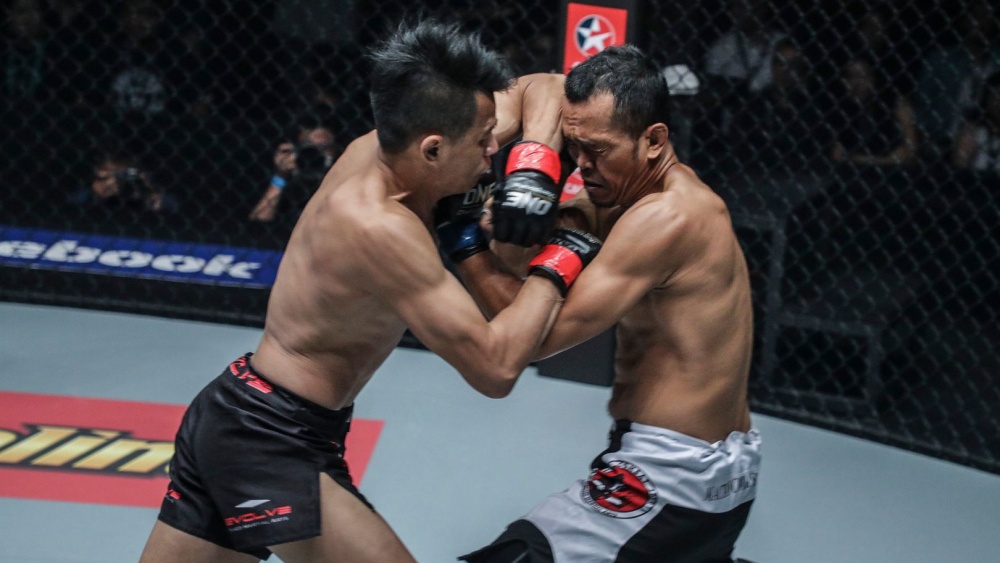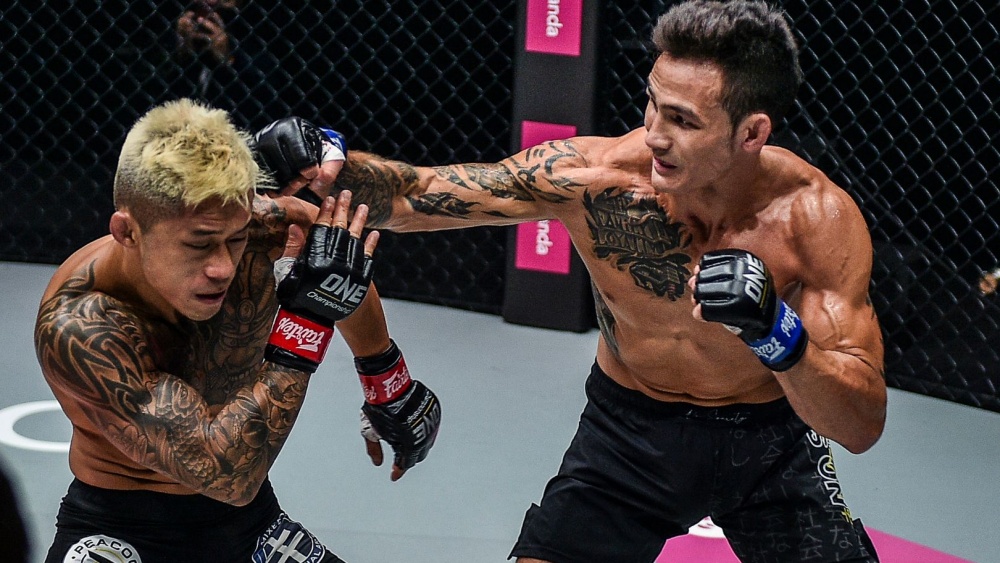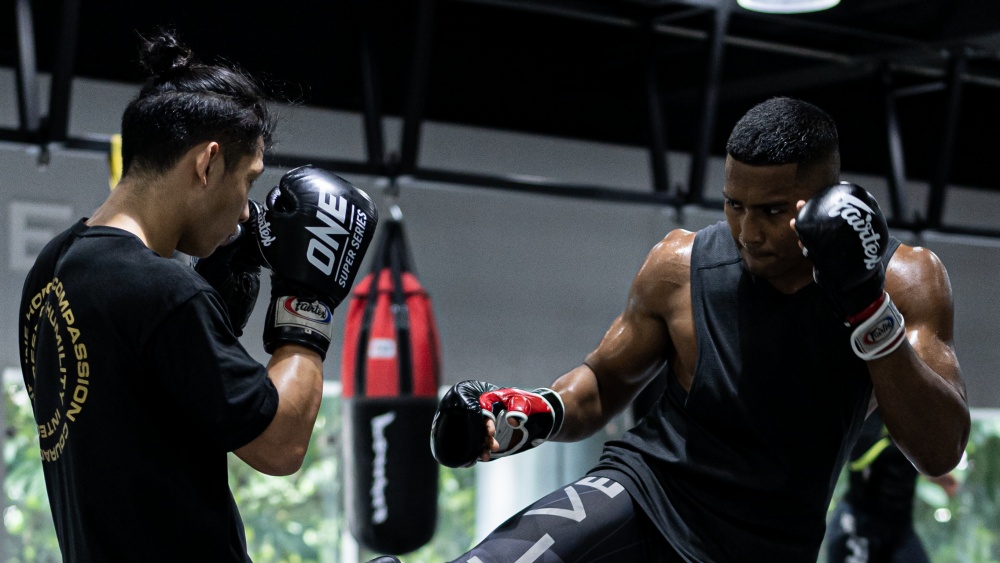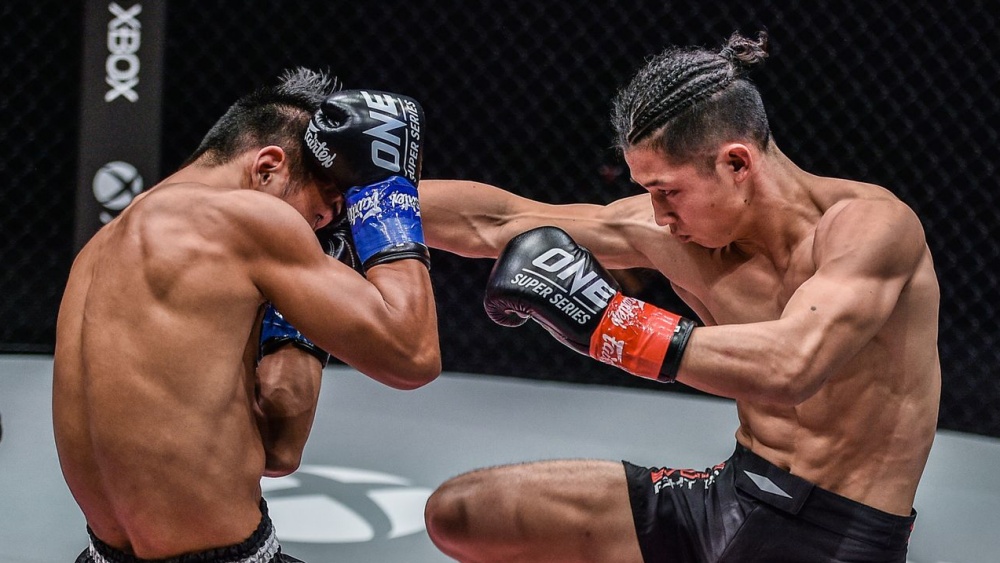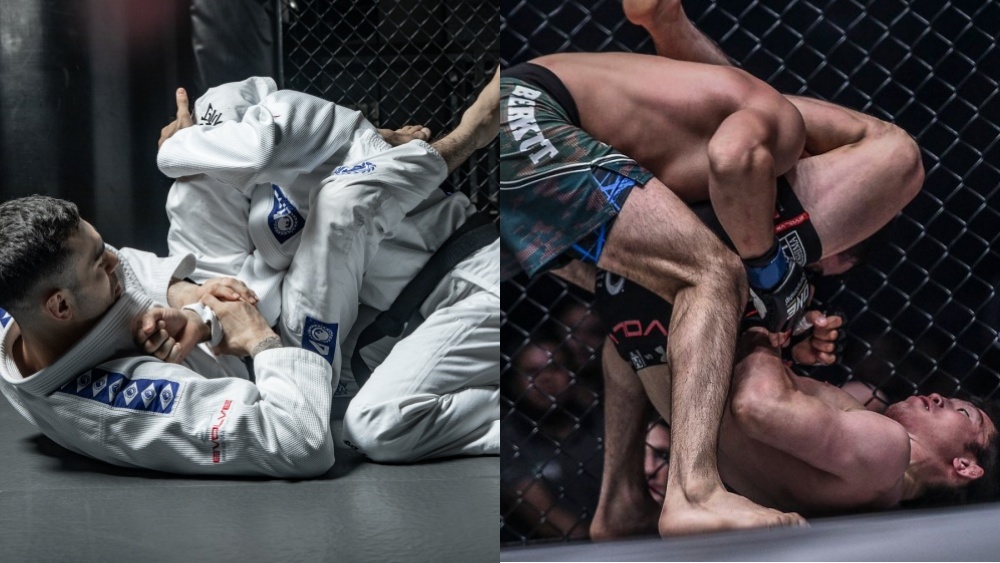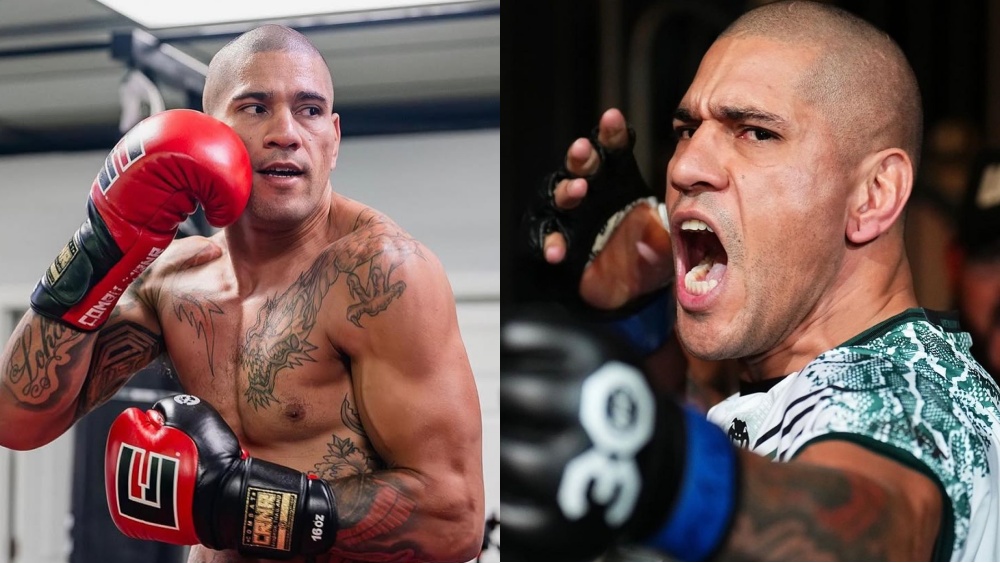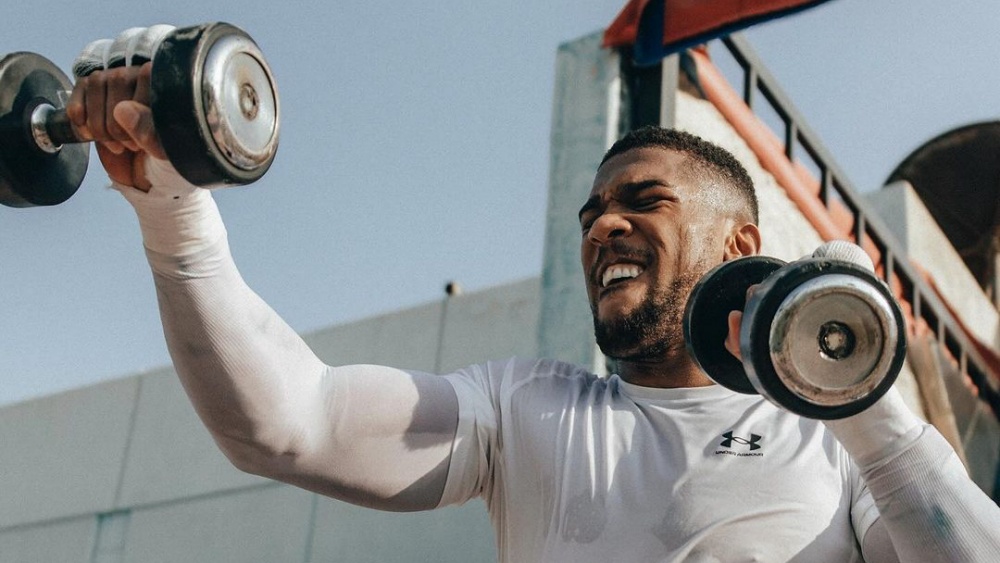The clinch is an essential aspect for any MMA fighter. It is the range of combat between stand-up striking and grappling on the floor. Strikers can utilize the clinch to keep the fight standing and land powerful strikes, while grapplers can use the clinch to neutralize and takedown a striker. Regardless of your individual MMA fighting style, knowledge of the clinch is a key skill. Elbows are very close-range strikes and are naturally suited to the clinch. Proficiency with elbows can determine which fighter dominates and controls the clinch. Today, Evolve Daily is pleased to share a guide on how to use elbows to improve your clinch game for MMA.
Types Of Elbows
There are a wide variety of elbow strikes that you can use in the clinch. We will briefly list and explain the mechanics of each one below.
1) Horizontal Elbow
The first elbow is a basic horizontal elbow. To throw this with your lead elbow, shift your weight onto your front foot. You then rotate your body towards your rear side while bringing your elbow in line with your target horizontally. Turn your lead palm outwards and your thumb down on your lead hand to line up the tip of your elbow with your target. Your rear hand should be in a high guard against your head to protect from incoming elbows. The rear side horizontal elbow follows the same steps, but you rotate towards your front side instead. These elbows can either be powerful smashing strikes or cut an opponent open with a glancing blow.
Variations on the horizontal elbow change the angle of attack. These include the diagonal upwards slashing elbow and diagonal downward slashing elbow. Kevin Lee demonstrates all three types in the video above.
2) Uppercut Elbow
The next type of elbow is an uppercut elbow. This elbow strike resembles a side cover block in boxing to block hooks. To execute a lead uppercut elbow, begin by stepping forward with your lead leg. You will then rotate your lead hip and shoulder slightly while lifting your lead elbow upwards vertically. Your rear hand should be in a high guard against your head for protection. This type of elbow is useful for exploiting the gap between an opponent’s hands down the centerline.
The spear elbow is a variation of the uppercut elbow. The body mechanics are almost identical with the exception of the angle of delivery. Instead of lifting upwards, the spear elbow comes straight forward or slightly downwards from your guard. Watch ONE Women’s Atomweight Muay Thai World Champion Allycia Hellen Rodrigues practicing spear elbows on the pads above.
The reverse upwards elbow, also known as the lawnmower elbow, is not seen as frequently but can be devastating when it lands. The elbow starts with the lead arm hanging down, almost in a Philly Shell-like position. You then explode upwards with your elbow with a motion that resembles someone starting a lawnmower. The reverse upwards elbow comes from below and is an awkward strike to block, which is why it’s so effective. Watch the above video of Anderson Silva as he slides in a reverse upwards elbow, knocking his opponent out.
3) Rambaa Elbow
The final type of elbow we will be discussing is one that Rambaa Somdet claims to have invented himself. Resembling the tomahawk elbow, the “Rambaa elbow” is used in a fifty-fifty clinch situation. To perform this elbow, you strike slightly inwards and upwards with your arm that is on the inside of your opponent’s arm. This is a very unconventional type of elbow strike that may also catch your opponent by surprise.
Clinch Tactics
One common clinch position is the fifty-fifty. This is where both fighters have a collar tie and one hand on the outside of their opponent’s arm. In this position, neither fighter has an advantage over the other. During a fifty-fifty clinch situation, one or both fighters will most likely attempt to pummel to gain underhooks. When your opponent swims their arm inside of yours, you have an opportunity to trap their hands and land a slashing elbow over their arm. Doing this continuously can rack up the damage on your opponent and open up nasty cuts that can stop a fight.
Elbows can also be especially effective when your opponent is against the cage. Since your opponent can no longer back up to create distance, this gives you a greater chance of landing your elbows. You can use hand traps as previously mentioned to land your elbow strikes even more cleanly. Leon “Rocky” Edwards demonstrates both of these concepts in the video breakdown above.
Another way to use elbows is when you have one or both of your arms on the inside of your opponent’s arms. If you have both arms on the inside, you want your palms on their biceps. This position is called the steering wheel and gives you a vast amount of control over your opponent’s movement. It also lets you feel when they are about to move and prepare your own counter. In the steering wheel position, you are able to let go of your opponent’s bicep on one side anytime to deliver a brutal uppercut, spear, or “Rambaa” elbow.
The last clinch tactic we will discuss is when you have a strong collar tie on your opponent. You can bury their face into your bicep, which will blind them from any strike with your opposite side arm. Once you are in this position, throw a knee from the same side that your collar tie is on. This will occupy their attention and make them drop their guard. You then disengage from the clinch completely while throwing a devastating horizontal elbow from the opposite side arm. Bas Rutten and Duane Ludwig demonstrate in the video above.
Conclusion
Elbows are a powerful tool for any fighter looking to improve their clinch game. Utilize the concepts and tactics outlined above in your own training to best suit your individual fighting style. Next time you find yourself in a clinch, remember there are a myriad of options using your elbows!
You may also like:
